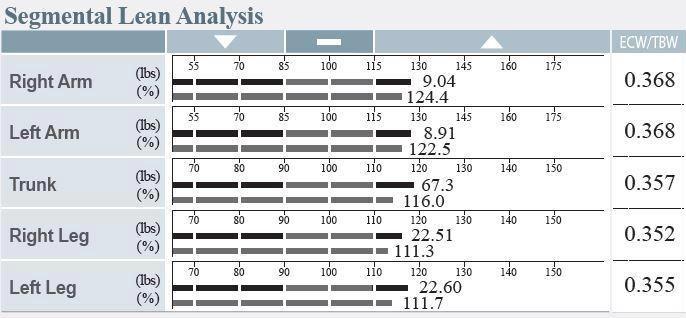
2 minute read
The Key to Customer Service
What is body composition analysis? What does that have anything to do with customer service?
Body composition analysis is a method of determining what makes up your weight: muscle, fat, bone, and water. And whether your customers realize it or not, they’re already coming to your store to optimize their body composition. Most of them want to change their body composition by gaining muscle or losing fat (and probably both). Now, by looking at their body composition results, you can guide them to exactly the right product on your shelf to help them reach their goals quicker.
What this amounts to is this: you’re providing each customer personalized 1:1 attention and offering them solutions so that they can meet their individualized goals.
That’s superior customer service.
How can you test for body composition? Although there are many ways to test body composition, there is only one practical method for in-store testing that’s accurate, reliable, and gives you enough information to make the right recommendations. That’s body composition testing using bioelectrical impedance analysis (BIA) technology.
For nutrition stores, it’s the ideal choice. These devices are small and can be eaily set up in a retail store. They also perform tests automatically, typically under a minute or less. Best of all, they don’t require any pinching or poking of your customer, like what happens when you use skinfold calipers. No one is going to come to your store to get pinched and poked.

What information do you get from a typical BIA body composition test?
Nearly all BIA devices will determine body fat percentage. Using this number and multiplying it with a customer’s body weight will give you their Fat Mass. You can subtract that number from their body weight, and what remains is their Lean Body Mass (which includes, but isn’t the same as, muscle. More on that here)
If you’re an InBody customer, you will have access to additional information such Skeletal Muscle Mass (what most people refer to as just “muscle”) with a graph showing if the amount is under, over, or within the normal range for that person’s body.
You and your customer probably don’t need a body composition test to determine if they are overweight. Your customers probably know this already, and this can be identified on the graph if the bar for Weight extends into the range under the “up” arrow.
What your customers may not know, however, is if they are underweight. This can also be identified on the graph by checking if the bar ends in the range under the “down” arrow.
You can also provide extra value to your clients by showing them where their Lean Body Mass is located and how developed they are from both an upper/lower body and right/left body perspective
InBody clients can also reveal a customer’s Basal Metabolic Rate (BMR), which describes how many calories your customers need to keep their bodies operating at their full potential.
With BMR, you can quickly determine how many calories your customer needs to gain/lose weight based on their activity level. With that information, you can start crafting customized diet plans based on your customer’s unique body composition and recommend the exact products. If you’re interested in that, you can read this complete guide to using BMR to creating diet plans.
All of this adds up over time to create an experience that build loyalty.





